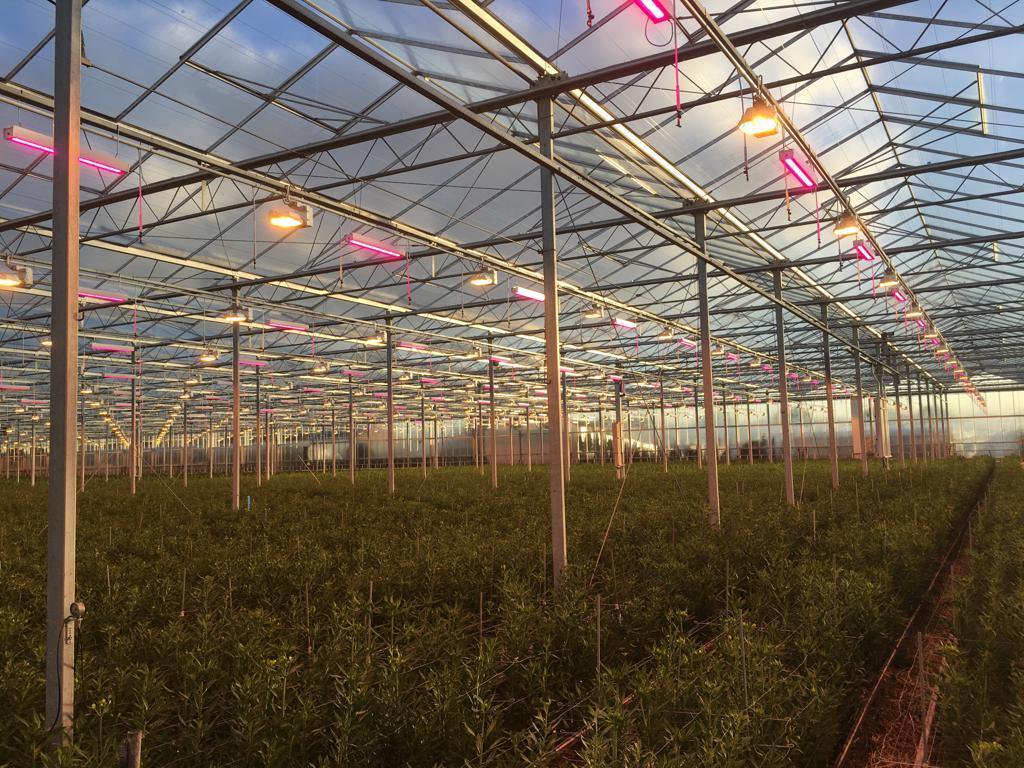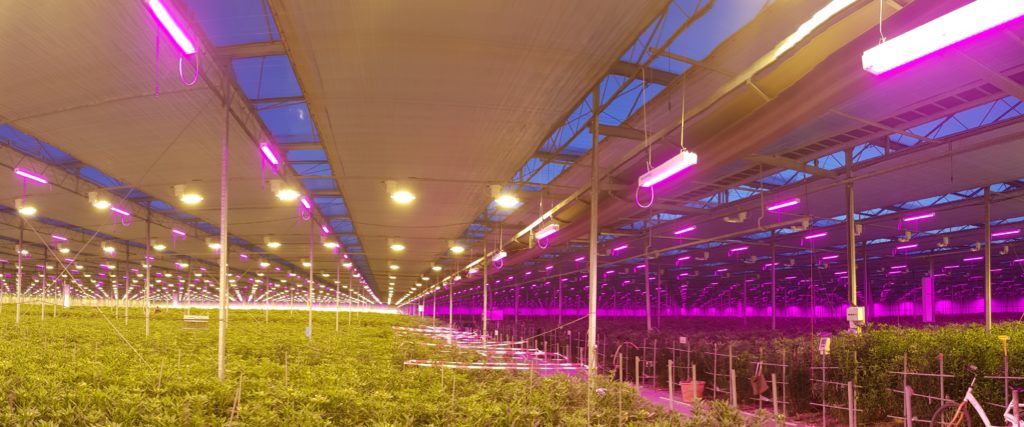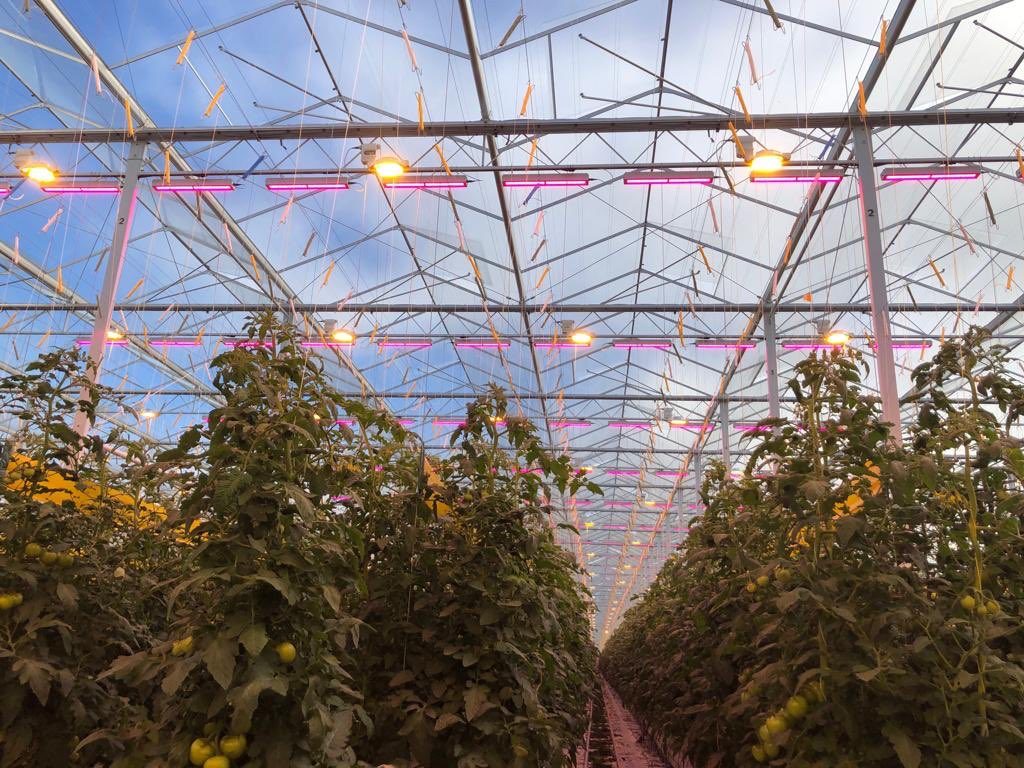What is a hybrid system?
Choosing between a traditional lighting system, such as high-pressure sodium (HPS) or metal halide (MH) lighting, and newer light-emitting diode (LED) technology can be a complicated decision. Factors such as energy use, ROI, maintenance costs, and how lamps affect the growth of your plants should be considered. Many growers are looking to switch to LED technology for energy savings or fine-tuning spectral recipes. However, given the young state of the industry and high initial costs, it can be overwhelming and cost-prohibitive to change over. There are many benefits and advantages to both LED and high-intensity discharge (HID) technologies. One of the best ways to take advantage of them can be to implement a hybrid lighting system.
A hybrid lighting system is where a growing facility installs both LED and HPS lighting (or even two different styles of lamps such as combining HPS and MH) in one grow space. In the case of an LED/HPS hybrid application, the two technologies can provide the ideal balance between a diffuse light distribution and spectral efficiencies. They also allow growers to take advantage of the radiant heating from the HPS lighting and extend the supplemental lighting period into the spring with LED lights when outside temperatures and daylight hours increase. A hybrid system also reduces the initial capex and can allow a grower to further manage costs by maintaining their existing infrastructure.

Lighting Overview
High-pressure sodium (HPS) lighting has been the mainstay in commercial horticultural applications since its introduction. The spectrum is rich in red wavelengths that provide an effect of daylength perception in plants promoting both growth and flowering in long-day plants like cannabis. But, HPS is comparatively poor on the blue end of the spectrum, which inhibits stem elongation. HPS lamps also produce a significant amount of radiant heat that transfers heat to crops like tomatoes, peppers, or cannabis, which require high temperatures for growth and development. An HSP also helps offset the cost of heating with natural gas or electricity.
Metal halide (MH) and ceramic metal halide (CMH) luminaires have been traditionally used by growers for the vegetative growing phase due to their broader spectrum and high emittance of blue light. The blue light limits the flowering response and increases chlorophyll content, thereby helping increase the photosynthesis rate of the plant. In addition, the blue and UV wavelengths can enhance the plant defense mechanism by initiating metabolic activity responsible for terpene and cannabinoid synthesis.
When comparing spectral efficiencies, HPS lamps emit a lot of light that is not usable for plants. This makes the HPS spectrum far less efficient than LEDs where the spectral output can be targeted to only wavelengths useful to the plant. In general, LEDs have a higher energy efficiency, longer life expectancy, and greater spectral efficiency.
Another advantage is that LEDs can help control the temperature of your growing environment as they do not emit energy as radiant heat. This is because LEDs dissipate heat away from the illumination field in the form of convective heat, unlike HPS lamps which emit heat in the direction of illumination in the form of radiant heat. Since heat is directed away from the crop, lights can be placed very close to the crop canopy without any burning. However, because of the lack of heat, this also means heating costs will be higher with LEDs in colder months, especially in northern climates.

LED and HPS hybrid system
There are many advantages to having a hybrid HPS and LED lighting system, including cost savings, greater spectral efficiencies, and light distribution. In terms of the light spectrum, HPS lamps have been confidently used as a growing spectrum for decades. Lately, though, there has been a lot of talk about light recipes for LED technology. Still, there has not been any solid evidence to support which combination of wavelengths will be best for crop production. For the most part, it is largely strain/variety dependent. There has also been research to suggest that blue light will enhance the synthesis of terpenes, anthocyanins, and THC/CBD. Again, it will largely depend on your genetics and will require some trial and error to determine if you get the results you desire. So, unless you are growing only one strain or variety per grow area, having specific light recipes for your crop does not make sense.
Plants need the right temperature to grow and develop properly. Many research trials have confirmed the relationship between temperature and plant growth. In applications with HPS lighting, the radiant heat warms the crop, thus hastening development. LEDs, as we mentioned earlier, do not emit transferable heat to crops. Therefore, extra heating is needed in the colder months.
A hybrid system will help balance the heat load in your growing facility, giving plants the temperature they need to develop while also helping offset heating costs in the colder months. Conversely, in spring and fall months when light levels need to be increased without raising indoor temperatures, LEDs can be used instead to increase the DLI and/or photoperiod while keeping temperatures low.
Another aspect to think about is how each light source distributes light. LEDs emit light in a single direction and light intensity diminishes the further away you are from underneath the light source. Because of the directional distribution of light from LEDs, shadows can be exacerbated if placed too close to the canopy.
On the other hand, HID lighting provides a more diffuse lighting pattern because it uses reflectors to direct the light. Plants can use diffuse lighting more efficiently than directional light due to how the light penetrates the canopy. Diffuse light also typically results in more growth than light directly from above. HPS lighting should be installed so that the light overlaps, shadows are reduced, and light penetrates in a horizontal direction. A mix of both HPS and LED lighting provides an ideal distribution of both diffuse and directional light.
Therefore, if you combine the already tested and true HPS luminaires with the more efficient LEDs, plants will be able to take and use the wavelengths they need (when they need them). This also provides radiant heat and diffuses light from the HPS lights while extending light with LEDs into the spring months without the added heat load.

HPS and MH Hybrid Lighting System
One other hybrid system we wanted to touch on was the combination of HPS and MH lighting. A hybrid lighting solution can also mean adding different light spectrums within the same growing space. In this case, we are talking about a higher red HPS luminaire mixed with a higher blue MH or CMH. A properly designed hybrid light system using MH and HPS lighting can allow the grower to improve crop productivity and quality.
In flowering rooms where a grower might want to experiment with adding more blue to increase terpenes or cannabinoids, MH lamps might make more economic sense than installing LEDs (which can be 3-5 times the price). Some growers also like having mixed spectrums for vegetative growing so plants receive a balanced spectrum for growth but not enough red to initiate any flowering response.
Conclusion
LEDs are now about 40% more efficient than the best HPS technology. However, the initial costs are still 3-5 times higher than a 1000W HPS. To install only LEDs, you will have to invest heavily and keep that installation for at least 5-10 years to see a return on investment. In that time, we expect LEDs will continue to become more efficient. So, the question becomes when is a good time to invest? Overall maintenance costs are small and similar between both LED and HID technology. Since heat from the HPS lamps is of great advantage to crops like tomatoes or cannabis, it makes sense to still use HPS luminaires in your grow space. HPS lighting provides the best return on investment and the lowest initial and lifetime costs. HSP is also a mature and proven technology that is easy to maintain. Adding LED lights allows you to increase your energy savings, have more control over spectrum and morphology, and may also increase polyphenols, terpenes, and other secondary metabolites such as cannabinoids.
Learn more about how a hybrid system can work in your growing facility by contacting us here or requesting a custom light plan.


